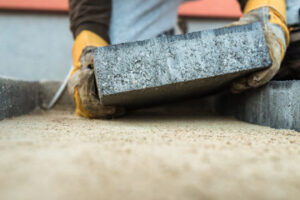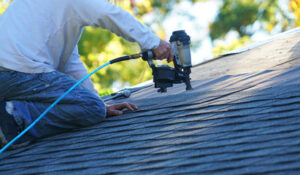The longer you wait to address foundation problems, the more extensive long-term damage your home will sustain. Cracks in walls, windows or doors that stick and uneven floors are signs your foundation needs repair.

While cracks in your home’s structure are alarming, not all cracks are bad and some are actually normal. There are several common repair methods used for repairing cracked concrete or sinking foundations. Contact Foundation Repair Plano for professional help.
Crack repair is a standard foundation repair technique that involves filling in and sealing cracks in the concrete to prevent moisture from seeping into them. The method can address both non-structural cracks and structural ones, and it may be used as a standalone solution or in conjunction with other types of repairs.
Cracks in the foundation walls and slab are often the first sign of foundation problems. These cracks can occur due to soil movement, hydrostatic pressure, or just natural settling over time. They can weaken the structure and allow water to infiltrate the home, resulting in serious problems.
Bowing or bulging walls are another sign of foundation damage and require immediate attention. Excessive lateral pressure from soil or water can cause these walls to bow inward, which is not only unsightly but also poses a safety hazard for the structure and its inhabitants.
Sinking or sagging floors are also an indicator that the foundation is experiencing issues and should be addressed immediately. The sagging or sinking is caused by the shifting of the soil beneath the foundation, and this can be remedied through different methods depending on the severity of the problem.
Typically, a foundation expert will conduct a diagnostic evaluation to determine the best method for repairing your foundation. This evaluation will include an assessment of the underlying issues, the soil conditions, and the condition of the foundation. This will help the contractor identify the most effective solution to meet your needs.
Concrete piers are a popular option for foundation repair because they can be used for both structural and cosmetic purposes. They are usually made of pre-cured concrete and can be installed in the foundation by driving or placing them into the ground. This method can be used in conjunction with other repairs, such as helical piers or segmented concrete piers.
Steel piers are another type of foundation repair solution. They are generally inserted into the ground by a construction crew using hydraulic jacks, which is why this method is considered as the gold standard of foundation repair.
Slab jacking is another great option for lifting and supporting foundations, especially for homes with small loads. In this process, grout is injected under the foundation to fill in voids and raise the concrete slabs back into place. There are several different types of slab jacking available, including epoxy injection and foam (high-density polyurethane).
Piling
Piling is one of the most common foundation repair techniques. This method utilizes concrete cylinders called piles to stabilize the foundation. The piles are driven into the soil beneath the structure to transfer the weight of the building. For this reason, the piles must be driven in deep enough contact soil with high load-bearing ability. At URETEK ICR Gulf Coast, we utilize both bored and driven pile methods to effectively repair foundation damage.
Another option is void fill injection, which uses a slurry of cement and dirt to lift the foundation. This process works best in cases where the foundation is only slightly off center. It is also useful for lifting concrete slabs that have become damaged due to settling or movement of the soil underneath.
A third option is slab jacking, which uses hydraulic pressure to raise concrete. This is the preferred method for raising highways, but can be used to repair residential concrete foundations as well. Slab jacking is similar to foam jacking, but uses a different substance. There are more than 10 types of high-density polyurethane foam, and each has its own use case. For example, RR501 is good for stabilization, while FS201 is great for areas with high moisture content.
One of the most reliable and long-lasting foundation repair methods is steel piers. Galvanized steel piers are driven into the ground beneath the home to reach solid bedrock or stable soil, and they work in nearly all upper soil conditions. They are considered to be a permanent solution for fixing the foundation, and can support massive loads.
Often, the most dangerous sign of a failing foundation is horizontal cracks. These indicate that the structural integrity of the foundation has been compromised. It is important to consult a professional as soon as you notice these signs. A trained technician can diagnose the underlying problem and recommend the best course of action.
If you have noticed any of the warning signs above, don’t wait to call a foundation repair contractor. These signs could indicate that your foundation is in serious need of repair, and it’s important to take care of the issue sooner rather than later. Don’t try to fix the problem yourself with patches and sealants, as these will only mask the underlying issue and won’t last very long.
Epoxy Injections
Epoxy injections are a concrete repair technique that involves pumping epoxy resin into cracks to fill them and restore their structural integrity. This method is especially useful for repairing dormant cracks and voids in foundation walls, concrete buildings, and other structures. Unlike urethane sealers that simply stop leaks, epoxy resin actually welds the broken concrete back together and can effectively restore it to its original strength and loading capability.
The best part about epoxy injections is that they can be performed on site in a relatively short amount of time, making them a great choice for commercial and industrial applications where downtime must be minimized. This method is also very cost effective, especially when compared to other concrete repair techniques that require extensive excavation and can take hours or even days to complete.
Before injecting the epoxy, it is important to make sure that all contaminants are removed from the crack. This can be done using a power washer or by blowing out any remaining liquid with clean, compressed air. It is also a good idea to remove any surface coatings or sealants that are present on the cracked concrete. These must be removed before injecting the epoxy as they will lift under pressure and cause a leak.
Once the contamination has been removed, the injection ports must be installed into the surface of the concrete. These ports should be placed about 8″ apart along the length of the crack. Before the injection process begins, a small amount of the epoxy is spread over the base of each port to help it adhere. Once the injection has been completed, any excess epoxy paste-over can be removed using a chisel, scraper, or grinder.
Injection of epoxy resin into concrete can repair a wide range of crack sizes and orientations, making it a versatile solution for many applications. It can also be used in conjunction with other foundation repair techniques, including helical piles, permeation grouting, and slab jacking.
If you have noticed any signs of a cracked foundation, contact Ameriseal immediately. These may seem like minor issues at first, but they can indicate a serious problem that requires immediate attention. Leaving these cracks untreated could lead to more severe problems down the road, such as water intrusion or bowing wall failure.
Slab Jacking
Slab jacking is an effective and economical method for lifting concrete foundations that have sunk or settled due to soil erosion or improper construction. This repair technique involves drilling holes into the failing slab and then pumping a concrete slurry or dense polyurethane foam through those holes. The material quickly fills the sunken void and lifts the concrete slab, usually within minutes. It is a fast and clean alternative to replacing the sinking concrete and can be used to level sidewalks, driveways, garage floors and parking lots.
When a home’s foundation begins to sink, it can often cause problems throughout the house. Doors and windows may no longer open or close properly, floor joists will bow or warp, and water intrusion can lead to mold, wood rot and serious structural damage. These issues can become worse if left untreated, and are generally signs that the foundation needs to be repaired.
Steel piers, or push piers, are a highly durable and long-lasting option for foundation repair that’s suitable for homes with shallow footings. They’re made of high-strength steel and are driven into the ground beneath the foundation until they reach load-bearing strata. While steel piers are considered one of the best solutions for stabilizing and reinforcing your home’s foundation, they can be expensive to install.
Another option for repairing foundations with shallow footings is to use concrete piles, also known as poured concrete piers. They’re a good choice for most soil conditions and are designed to support the weight of your structure and prevent it from moving over time. They’re typically formed into simple cylinders or blocks and can be either driven into the ground or placed underneath the foundation.
Mud jacking is similar to slab jacking but uses a slurry of concrete, soil and ash to raise the concrete. It doesn’t address the underlying problem, however, and should the clay soil under the foundation continue to upheave or heave, the mud jacked foundation will eventually fail. Drainage correction using French drains, surface drains or slope correction can solve these problems by addressing moisture concerns and preventing future upheaval of the foundation.




